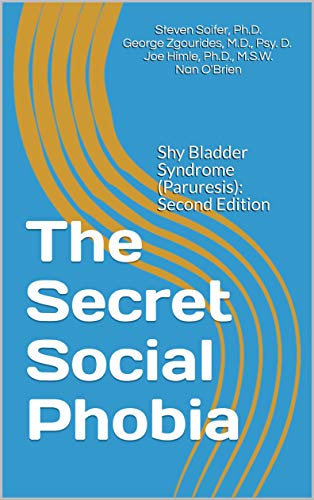What is the Breath-Holding Technique?
Recently, IPA Executive Director Tim Pyle sat down with Support Coordinator Dave Kliss to talk about the Breath-Hold Method.
Watch the 10-minute video here!
Does it work for everyone?
This technique is thought to work because an increase in carbon dioxide in the bloodstream has been reported to reduce anxiety and induce relaxation in some patients. This technique is well suited for people who can usually urinate around others once they get a stream started, but have difficulty starting the stream. Monroe Weil, Ph.D. reported using it successfully in three patients.[xi]
A Brief Description of the Technique
Some Additional Notes on Breath Holding:
If you find the technique useful, after practice it will work even with a low level of urgency or none at all. At this point if it is necessary to empty the bladder in a crowded situation, before a trip, or to avoid waking up at night, breath holding works every time.
During the practice period, some people who reported a great deal of fear holding the breath for a long time have persisted and found that the desired effect on easing urination happens once they overcome the fear. If this applies to you, try to stay with the practice and get past the fear. Many believe they will faint if they hold their breath for too long, but that is not a serious danger. If you have the level of control to starve yourself of air to the point of fainting, once you faint you’ll start breathing again. If you’re very concerned, then try holding your breath at a doctor’s office where emergency help is available. Most people report they can urinate after around 45 to 60 seconds of breath holding. That’s a long time, but if you are healthy it’s not dangerously long.
*There is one side effect of the technique, which is that it can also relax the anal sphincter. So, if a person needs to deal with that, visit a stall and take care of #2 before practicing at urinals.
A Personal Account from Someone Using this Technique Successfully
This would not be complete without a sports analogy. When I first started skiing really steep slopes, almost extreme terrain, I was with a group of very good skiers. I’m a good black diamond, mogul skier and these folks were way above that. Our ski instructor/guide told me that the only way I could get down the slope was to have courage. I had to trust my ability to slow my skis with all the techniques I had previously learned. You must have the courage to see this through. It is worth it, trust us! You will not faint or pass out, but you probably will gasp for air, at that point you are close. Very close, stay with it. If you do gasp for air, just suck in a little and hold your breath again.
For those of us doing it properly it works every time in every condition. For me, troughs at Steelers games, planes, bars, everywhere. As a matter of fact sometimes I’m very tense just from holding my breath and being stiff or whatever, but I know if I see it through, it works. Once the stream starts, if you start clamping up, just exhale again and your stream will return. For those of us practicing for years, usually once our stream starts we can keep it going.
Over time a lot more people will become comfortable with the technique. Again, it does not improve your primary AP, although my secondary AP is almost non-existent. I find myself making plans and doing things with people and places that I would have avoided. I’m not thinking about AP. Then later it dawns on me “oh my gosh, I just decided to go to such and such with so and so without thinking about where I’m going to pee. Pretty cool.
One warning about using this technique: In some individuals with panic disorder, it has been reported that elevated levels of carbon dioxide can cause symptoms of increased anxiety and panic. If you notice this happening and the symptoms do not improve with practice, then the technique may not be useful for you, or won’t become useful unless the panic disorder is treated. [xi]
QUICK LINKS
INTERNATIONAL PARURESIS ASSOCIATION
P.O. Box 21237
Catonsville, MD 21228
You Are Not Alone.
There Is Help For You!
Shy Bladder, Bashful Bladder, Pee Shy
IPA OFFICE HOURS
Monday - Friday
10:00am - 6:00pm (ET)
844-I-CANT-PEE (422-6873)
US/Canada
443-315-5250 Office
Email: getinfo@paruresis.org
This website is NOT a substitute for medical or legal advice and does not constitute the practice of law, medicine, psychiatry, clinical psychology, clinical social work, or any other mental health profession. If you are having trouble urinating, you should always contact a physician since difficulty with voiding can be a symptom of a serious medical condition. We are a group of professional people and people who have suffered with paruresis. We have assembled a board and a board of advisors to help people cope with urinary dysfunction that has a psychological or social origin. On this website, we are NOT practicing medicine, psychiatry, clinical psychology, clinical social work or any other mental health profession. You should have your doctor evaluate your condition before diagnosing yourself, and seek the appropriate necessary mental health counseling if warranted. IPA, Inc. disclaims any and all legal liability whatsoever.



